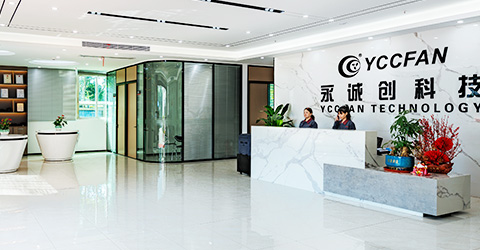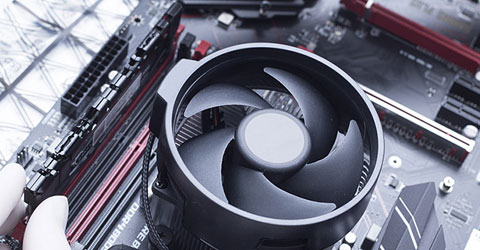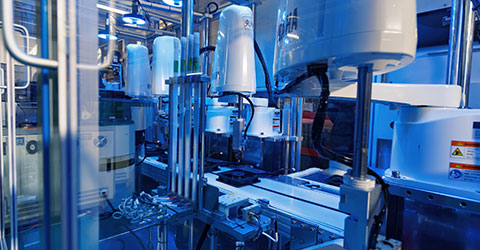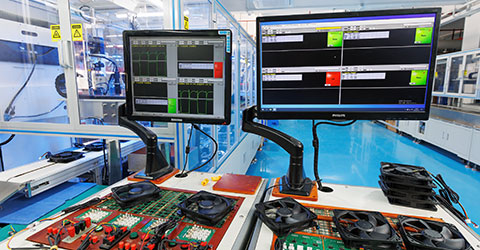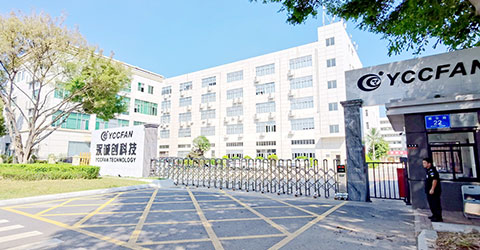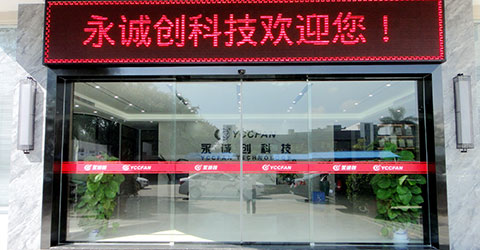What is the Difference Between Industrial Cooling Fan and Commercial Fan?
This guide will help you clearly distinguish between commercial fans and industrial cooling fans, allowing you to make an informed decision based on your specific needs.
1.Key Differences at a Glance
Aspect | Commercial Fan | Industrial Cooling Fan |
Application | Human comfort / general use | Equipment / machinery cooling |
Performance | Moderate airflow / noise focus | High performance / durability |
Durability | Shorter lifespan, lighter use | Heavy-duty, long-term use |
Design Priority | Aesthetics, quiet operation | Efficiency, reliability |
Certification Focus | CE, ETL, local standards | UL, TUV, ISO9001, IATF16949 |
2.What is an Industrial Cooling Fan?
2.1 Definition & Common Applications
Industrial cooling fans are specifically engineered to provide precise and reliable thermal management in environments where equipment performance, operational stability, and longevity are critical. Unlike commercial fans designed primarily for human comfort, industrial fans serve a functional role in safeguarding sensitive electronic and mechanical systems from heat-related failures. By maintaining optimal operating temperatures, these fans help extend the lifespan of equipment and reduce the risk of unexpected downtime.
Their applications span a broad range of industries that require continuous, dependable cooling solutions. Common use cases include data centers to cool servers and networking hardware, EV charging stations to regulate heat in power modules, and medical equipment where precise temperature control ensures the accuracy and safety of diagnostic and imaging devices. Additionally, telecommunications infrastructure, industrial automation, power inverters, HVAC systems, and energy storage solutions rely on industrial fans to manage thermal loads efficiently, particularly in environments facing high operational demands, variable workloads, or challenging conditions.
For a deeper look at the industry's leading manufacturers and how to choose the right partner, check out our Top 5 Industrial Cooling Fan Manufacturers in 2025 guide.
https://www.yccfan.com/articledetail/510.html
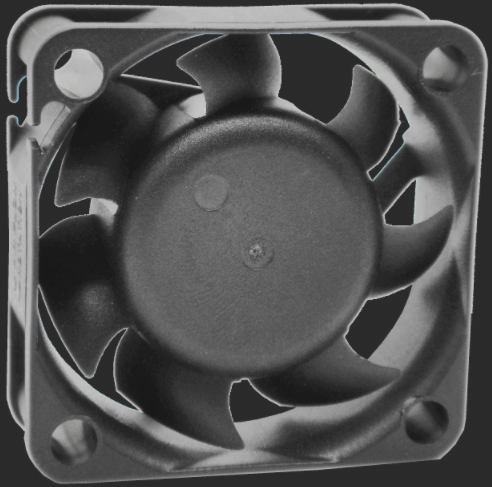
2.2 Key Features of Industrial Cooling Fans
Industrial cooling fans are distinguished by their robust design and ability to maintain high performance even under continuous, demanding use. They are engineered to deliver strong airflow and high static pressure, making them well-suited for applications where space is constrained, components are densely packed, and airflow resistance is significant. This ensures effective heat dissipation, even in enclosed or highly complex systems.
Durability is another defining characteristic. These fans are constructed from materials such as reinforced engineering plastics, corrosion-resistant metals, and specialized coatings that enable them to withstand extreme temperatures, humidity, dust, and chemical exposure—conditions commonly found in manufacturing, energy, and outdoor environments. To ensure long-term reliability and reduce maintenance cycles, high-quality components such as precision ball bearings and durable motor assemblies are standard, supported by protective measures against environmental wear.
Furthermore, industrial cooling fans are manufactured in compliance with globally recognized standards and certifications, including UL, TUV, ISO9001, and IATF16949. These certifications validate not only the fans’ safety and performance but also their alignment with the rigorous quality requirements of industries like automotive, renewable energy, and healthcare. Ultimately, their combination of durability, efficiency, and regulatory compliance makes industrial cooling fans a fundamental solution for protecting critical technologies and maintaining operational excellence.
YCCFAN has steadily grown into a trusted partner for global brands across industries. Committed to becoming the No.1 brand in China's cooling fan industry, YCCFAN continues to deliver high-quality, reliable cooling solutions that meet the evolving demands of modern industrial applications.
3.What is a Commercial Fan?
3.1 Definition & Common Applications
Commercial fans are specifically designed to enhance air circulation and provide thermal comfort in environments where people, not equipment, are the focus. Unlike industrial cooling fans, which prioritize equipment protection and system reliability under demanding operating conditions, commercial fans serve environments that value aesthetics, quiet operation, and energy efficiency to improve occupant comfort.
These fans are commonly used in retail environments, office buildings, restaurants, public facilities, and household appliances, where their primary role is to maintain comfortable airflow, assist ventilation, and reduce heat buildup in spaces occupied by people. Whether integrated within HVAC systems or functioning as independent units, commercial fans support overall air quality and thermal comfort without the need for the high-performance specifications required by industrial systems.
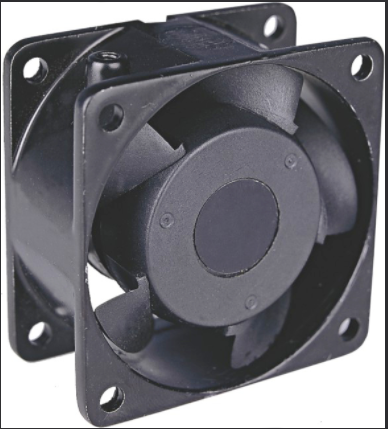
3.2 Key Features of Commercial Fans
The defining characteristics of commercial fans center on aesthetics, efficiency, and quiet operation—qualities that align with the needs of human-centric environments. Typically featuring modern, streamlined designs, these fans are developed to complement architectural interiors, making them suitable for both commercial properties and home settings where appearance and user experience are important.
Commercial fans are also engineered for energy-efficient performance, with lower power consumption compared to their industrial counterparts. This is due to their moderate requirements for airflow and static pressure, as their function centers on maintaining ambient comfort rather than cooling high-heat systems or machinery.
Low-noise operation is another essential feature, as these fans are often installed in spaces where noise pollution can impact productivity or the overall environment. Manufacturers place a strong emphasis on minimizing acoustic output to create a more pleasant atmosphere for occupants. Additionally, commercial fans typically comply with certifications such as CE and ETL, ensuring adherence to regulatory standards for safety, efficiency, and product reliability within consumer and commercial markets.
In essence, commercial fans are purpose-built for settings where comfort, design, and energy efficiency outweigh the rugged durability and high-performance demands of industrial cooling applications.
4.Which Cooling Fan Do You Need?
When deciding between a commercial fan and an industrial cooling fan, the right choice largely depends on how and where the small cooling fan will be used, as well as the specific performance requirements of your application. To make an informed decision, consider the following factors:
4.1 End-Use Application:
Determine whether the fan’s primary purpose is to improve air circulation and enhance comfort in spaces designed for people — such as homes, offices, retail environments, or public facilities — or whether it’s intended for the more demanding role of cooling machinery, electronic systems, or industrial equipment where consistent thermal management is essential.
4.2 Airflow & Pressure Requirements:
Evaluate whether your application needs high airflow and strong static pressure to effectively dissipate heat within confined, equipment-heavy, or ventilation-restricted environments. In comparison, spaces focused on general ventilation or ambient comfort typically only require moderate airflow without the need for specialized performance.
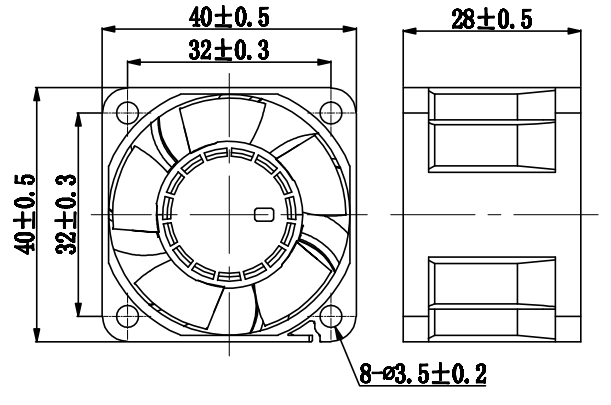
4.3 Environmental Conditions:
Take into account the operating environment. Industrial fans are specifically engineered to function reliably in challenging conditions — including exposure to dust, moisture, temperature fluctuations, and vibrations. Commercial fans, however, are designed for use in cleaner, more stable environments where such factors are minimal or controlled.
4.4 Lifespan & Maintenance Expectations:
Consider how frequently the fan will operate. Industrial cooling fans are built for continuous 24/7 operation with a focus on long-term durability and low maintenance needs. Commercial fans are typically suited for occasional or seasonal use, with an emphasis on energy efficiency, quiet performance, and integration into visually appealing environments.
4.5 General Recommendation:
For environments that prioritize human comfort, quiet operation, and energy savings — such as homes, offices, and retail spaces — commercial fans are usually the best fit. In contrast, for applications where reliability, durability, and high-performance cooling are non-negotiable, such as in manufacturing facilities, data centers, medical devices, and EV charging stations, industrial cooling fans are the more appropriate choice.
5. Can I Use a Cooling Fan Industrial at Home?
While it is technically possible to use an industrial cooling fan in a home environment, this is rarely recommended unless the space serves a very specific function. Areas like garages, workshops, greenhouses, or specialized hobby spaces — where effective heat dissipation is more important than aesthetics or noise control — may justify their use.
However, there are practical drawbacks to consider. Noise levels are generally higher with industrial fans, as they prioritize cooling performance over acoustic comfort. Their airflow output is often excessive for residential environments, potentially leading to discomfort or inefficiency. In terms of design, industrial fans are typically larger, more utilitarian, and may appear out of place in home interiors. Additionally, power consumption tends to be higher, as these fans are optimized for performance rather than energy savings in domestic settings.
For most households, where priorities include quiet operation, energy efficiency, and visual harmony, commercial-grade fans remain the better choice. That said, in specific functional areas where cooling performance takes precedence over noise or appearance, an industrial fan can still offer a practical, if niche, solution.
Learn more:
https://www.yccfan.com/articledetail/519.html
https://www.yccfan.com/articledetail/508.html
https://www.yccfan.com/articledetail/503.html
Conclusion
In summary, the choice between a commercial fan and an industrial cooling fan comes down to your intended application, performance expectations, and environmental conditions.


